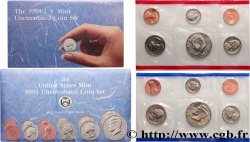Live auction - fme_994797 - BRÉSIL - DEUXIÈME RÉPUBLIQUE Médaille, Service spécial de santé publique
Usted debe firmar y ser un comprador aprobado para pujar, Inicia sesión para pujar. Las cuentas están sujetas a la aprobación y el proceso de aprobación se alcanzan dentro de las 48 horas. No espere hasta el día en una venta se cierra el registro.Al hacer una oferta en este artículo usted está firmando un contrato jurídicamente vinculante para comprar este artículo y haga clic en «oferta» constituye una aceptación de los términos de uso de live auctions de cgb.fr.
La subasta debe ser colocado en euros enteros cantidades venta only.The se cerrará en el momento en la descripción del artículo, no se ejecutarán las ofertas recibidas en el sitio después de la hora de cierre. Veces Transmition pueden variar y las ofertas pueden ser rechazadas si espera a los últimos segundos. Para más información envie el FAQ Live auction.
Las ofertas ganadoras estarán sometidas a un 18% IVA incluido por gastos de participación a la venta.
Las ofertas ganadoras estarán sometidas a un 18% IVA incluido por gastos de participación a la venta.
| Valoración : | 60 € |
| Precio : | 30 € |
| Oferta más alta : | 30 € |
| Fecha de fin de la venta : | 24 junio 2025 15:07:50 |
| participantes : | 1 participante |
Tipo : Médaille, Service spécial de santé publique
Fecha: 1960
Nombre del taller / ciudad: Brésil
Metal: plata
Diámetro: 45 mm
Eje de acuñación: 12 h.
Peso: 44,1 g.
Canto: lisse
Cuño: sans poinçon
Comentarios sobre el estado de conservación:
Patine hétérogène avec des traces d’usure et légèrement nettoyée (traces de frottement) sur le revers et sur la tranche
Anverso
Titulatura del anverso: SALVBRITAS UBIQUE CVRANDA // FVN / DACAO / SESP / M / CM / LX.
Descripción del anverso: Légende circulaire et en 6 lignes posé sur une carte du Brésil.
Reverso
Titulatura del reverso: SERVICO ESPECIAL DE SAUDE PUBLICA // M. S. / 1942 / 1960.
Descripción del reverso: Légende circulaire et en 3 lignes.
Traducción del reverso: Service spécial de santé publique.
Comentario
Le Service Spécial de Santé Publique (SESP) a été créé en 1942, sur la base d'un accord entre les gouvernements brésilien et nord-américain, avec des fonctions d'assainissement dans les régions qui produisent des matières premières, comme le caoutchouc de la région amazonienne et le minerai de fer et de minerai. mica de la vallée du Rio Doce. SESP s'est développé dans les régions rurales brésiliennes, où il a construit des réseaux d'unités de santé locales, axées à la fois sur la médecine préventive et curative, avec l'éducation sanitaire comme axe principal dans les espaces les plus variés, y compris les écoles primaires. Le but de cet article était de présenter les concepts d'éducation à la santé, ainsi que les activités d'éducation à la santé destinées spécifiquement aux écoliers, en cherchant à articuler les concepts sespiens avec les processus de subjectivation, qui peuvent ou non avoir contribué à la production d'autres et nouveaux matrices d'identité. Pour cette étude, nous avons retenu la période de 1942 à 1960, étape où le SESP se présentait comme une agence bilatérale, et dotée d'une certaine autonomie réglementaire et budgétaire par rapport à l'ancien ministère de l'Éducation et de la Santé publique. Comme sources historiques, ses publications de cette période ont été utilisées, le SESP Magazine et le SESP Bulletin.
The Special Public Health Service (SESP) was created in 1942, based on an agreement between the Brazilian and North American governments, with sanitation functions in regions that produce raw materials, such as rubber from the Amazon region and iron ore and minerals.. mica from the Rio Doce valley. SESP developed in rural Brazilian regions, where it built networks of local health units, focused on both preventive and curative medicine, with health education as the main axis in the most varied spaces, including primary schools.. The aim of this article was to present the concepts of health education, as well as health education activities specifically aimed at schoolchildren, seeking to articulate Sespian concepts with processes of subjectivation, which may or may not have contributed to the production of other and new matrices of identity.. For this study, we have chosen the period from 1942 to 1960, a stage when the SESP presented itself as a bilateral agency, and endowed with a certain regulatory and budgetary autonomy in relation to the former Ministry of Education and Public Health.. As historical sources, his publications from this period were used, the SESP Magazine and the SESP Bulletin
The Special Public Health Service (SESP) was created in 1942, based on an agreement between the Brazilian and North American governments, with sanitation functions in regions that produce raw materials, such as rubber from the Amazon region and iron ore and minerals.. mica from the Rio Doce valley. SESP developed in rural Brazilian regions, where it built networks of local health units, focused on both preventive and curative medicine, with health education as the main axis in the most varied spaces, including primary schools.. The aim of this article was to present the concepts of health education, as well as health education activities specifically aimed at schoolchildren, seeking to articulate Sespian concepts with processes of subjectivation, which may or may not have contributed to the production of other and new matrices of identity.. For this study, we have chosen the period from 1942 to 1960, a stage when the SESP presented itself as a bilateral agency, and endowed with a certain regulatory and budgetary autonomy in relation to the former Ministry of Education and Public Health.. As historical sources, his publications from this period were used, the SESP Magazine and the SESP Bulletin








 Informar de un error
Informar de un error Imprimir la página
Imprimir la página Comparte mi selección
Comparte mi selección Haz una pregunta
Haz una pregunta Consignar / vender
Consignar / vender







